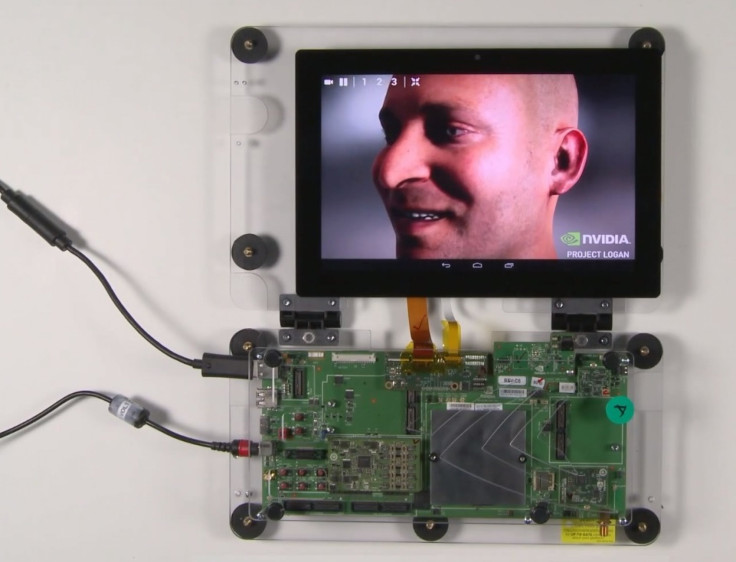3 Things To Know About The Tegra 5: Nvidia Project Logan More Powerful Than PS3 [VIDEO]

Project Logan is the next generation of system on a chip technology from Nvidia (NASDAQ:NVDA). The company showed Project Logan off at the visual computing conference Siggraph 2013 in California this week.
Using a detailed demonstration of the human face originally designed for desktop graphics cards, Nvidia revealed how Project Logan SoCs, designed for use in a tablet, are capable of generating detailed, high-definition graphics for video games. Aspects of the face demo were scaled back from the desktop version for use on a tablet-sized device, but Nvidia showed just what is possible with the successor to the Tegra 4.
1) Project Logan is the code name for Tegra 5
Since the Tegra 3 began with the codename Kal-El (the Kryptonian birth name for Clark Kent, or Superman), all of Nvidia’s Tegra chips have had a superhero-themed alias. The Tegra 4 was a SoC with a quad-core CPU for major processing duties, with the addition of a fifth core for basic functions that requires less power.

2) Project Logan is 2.5x faster than the Tegra 4 in the Nvidia Shield
Project Logan, or the Tegra 5, will be about 2.5x faster than the Tegra 4. Project Logan will integrate Nvidia’s Kepler GPU architecture, which was developed for computers ranging in size from large-scale supercomputers to mobile devices, much like Intel's plan for their Haswell chips.
The Tegra 5 will not see a release in consumer electronics devices until early 2015, while those who ordered the Nvidia Shield will have to wait until July 31 for the handheld gaming device, based on Google’s Android operating system, to see a release due to hardware issues.

3) Project Logan will be capable of detailed 1080p graphics in mobile devices
Project Logan has the graphics capability of the PlayStation 3 with the low-power usage necessary in a tablet. Since portable devices like tablets and smartphones run on batteries, but if there were no power restrictions, Nvidia said the Tegra 5 would be twice as powerful as the PS3.
Using a “reference tablet platform,” Nvidia showed off the Tegra 5 with a demonstration of Ira, which Nvidia claims is the most detailed model of a human face in existence.
Nvidia claims that the Tegra 5 used in the Ira demonstration uses on 2 – 3 watts of power, which is about 2 percent of the power required for desktop chipsets running the Kepler architecture with full detail. The demonstration has also been scaled back for the reference tablet that Nvidia uses, with simpler skin shading techniques, smaller textures and resolution brought down from 4k to 1080p.
Nvidia said that Project Logan’s capabilities will allow game developers to more easily take advanced graphics developed for desktop machines to mobile devices. They note that the mobile demonstration has the same deep tissue scattering found in renders on the desktop chip, albeit scaled back in detail, using the example of light filtering through the on-screen character's ear.
© Copyright IBTimes 2024. All rights reserved.





















